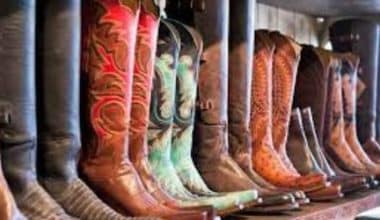Over the years, Hermes has established itself in Europe by manufacturing high-quality equipment for coaches and horses. It was made for royalty, no less. This can also be seen in their logo. From the font style and the symbol, down to the colors, the Hermes logo exudes nothing but class and prestige. We’ll see more about the meaning and history of the Hermes logo in this article, including the brand’s collection of bags.
Meaning and History of the Hermes Logo
The corporation was established in the nineteenth century. Initially, it created riding accessories such as distinctive harnesses and luggage. And it became clear one day that the stock needed to be increased. The company is named after its creator, Thierry Hermes. A corporation with such a name could incorporate the god Hermes into its logo.
The Hermes logo reflects the company’s role as a manufacturer of chariot accouterments for the aristocracy.
Symbol
Hermes logo has used the emblem with a depiction of a Duc wagon with a horse since the 1950s. The horse-drawn carriage is meant to recall the company’s beginnings as a saddlery business.
Emblem
The Hermes caléche insignia was not created from scratch. Many sources claim that the designers were inspired by the drawing “le Duc Attele, Groom a L’Attente” (“Hitched Carriage, Waiting Groom”) by the French portrait and animal painter Alfred de Dreux (1810 -1860), and it appears to be accurate. When we compare the two images, we can clearly see a striking resemblance.
Colors
Hermes logo has been identified with a specific, comparatively gentle shade of orange for more than a half-century. In reality, it was first utilized for the company’s boxes in the early 1950s. The boxes quickly became an important part of the company’s visual identity. It’s not surprising that the firm chose the same color for its logo.
Why Does Hermes Use Orange?
This warm orange color, which is not Pantone-approved, became synonymous with the house after WWII. It first appeared in 1942, when cream-colored cardboard boxes were in short supply. The supplier had to make do with what he had. It just so happened to be orange.
The Hermes Logo Font
Rudolf Wolf created the font “Memphis Bold” for the Hermes logo.
Aptness is popular these days. As a result, such a noble and graceful Hermes logo is frequently employed just in part. The version just has an inscription. Of course, it includes an original font. It demonstrates the brand’s position and originality. The Hermes logo font is named after the corporation. It has manifested notches that may appear old-fashioned, but remember the brand’s history as it makes the move just right given the conditions.
In general, the Hermes logo may be seen without any inscriptions. Print advertisements, on the other hand, frequently include taglines. In order to underline its origins, the brand often uses the French form of its name, Hermès.
Evolution of The Hermes Logo
The first Hermes emblem was both attractive to the sight and obvious, emphasizing the company’s line of business. The most prominent characteristics in the logo are a fine carriage, a neat, tidy horse buckled into the harness, and an attractive gentleman standing next to it. It also included the name of the brand and the city of origin beneath it. Hermes Paris’ logo has altered little over the years.
Actually, the most visible modifications here are probably the graphic quality and line clarity. There was also some historical monogrammed variation. The Hermes emblem was woven together to produce a refined vignette with an “H” in the center. As we all know, ringlets and notches are only useful in a few instances. In most situations, they sabotage designers’ ideas and pictures. A premium corporation with historical origins, on the other hand, would embrace such a solution.
The Hermes Symbol
Hermes, like most gods in the Greek pantheon, had insignia that made him easily identifiable. What you might not realize is how Hermes’ symbols have persisted into the twenty-first century!
Most people associate Hermes with his distinctive winged sandals. While his footwear was clearly a component of his image in Greek art, his wings were surprisingly not his most prominent feature.
Hermes had numerous other emblems that related him to his roles as both a messenger and a shepherd, in addition to his wings. His unusual cap and symbol, a lamb, alluded to his function as a pastoral god.
Hermes might be recognized by his caduceus even more than by his attire and animals. This famous staff, topped with wings and laced with twisting snakes, represented his role as Zeus’ herald and messenger.
If the caduceus looks familiar, it’s because it’s still employed today, albeit in an area unrelated to Hermes. In reality, while his wings are suited for messages and postal services, many of Hermes’ most recognizable emblems have completely different meanings today.
Hermes Past Symbols
Greek gods had established symbolism and imagery long before the myths were written down by writers. These symbols, which were frequently acquired from ancient archetypes and pre-Greek cultures, were gradually assimilated into Greek art and mythology over hundreds of years.
Hermes’ symbols and imagery, on the other hand, varied frequently throughout Greek history. While certain gods can be recognized in their earliest depictions, the early forms of Hermes did not resemble the youthful man with wings that is commonly imagined.
Hermes was depicted in the archaic period as an elderly god with a full beard and serious visage, similar to Zeus or Poseidon. However, over time, his image evolved into that of a gorgeous youthful god with lithe features and a fully beardless face.
However, the older version of Hermes was frequently kept on the herma. These boundary stones were originally simple stone marks that were eventually replaced by stone or bronze pillars topped with the god’s visage.
Even when the younger Hermes gained popularity, the herma still depicted a bearded god on top.
The figure of Hermes on boundary and road signs represented his position as the god of travelers and messengers. It also represented his capacity to traverse borders, both on land and between realms.
These hermae occasionally included phallic iconography, a relic of the god’s old relationship with fertility and the birth of new life. While his status as a fertility god had waned, iconography such as his bearded visage persisted in some situations.
How Is Hermes Depicted?
Hermes was sometimes depicted holding a lamb, alluding to his status as a shepherd god. After stealing the cattle of his half-brother Apollo as a newborn, he inherited this role.
His affinity for country life was also reflected in his unusual hat.
The wide-brimmed hat, or petasos, that Hermes frequently wears is unique among the gods but would have been typical among Greeks. The petasos was a type of headdress worn by rural peasants and shepherds to keep the sun out of their eyes.
Hermes also wore unusual sandals, called pedila. They were fashioned of exquisite gold and were meant to allow him to travel at amazing speeds.
Both his sandals and headdress were frequently depicted in Greek art with little wings on the sides. Although this was not an original part of the god’s iconography, it became so popular that he was occasionally depicted in subsequent ages with miniature wings growing directly from his head and ankles.
His characteristic cloak was also thrown across his shoulders or over his arm. It possessed the ability to bestow invisibility, allowing him to move throughout the planet unnoticed.
The caduceus, on the other hand, was Hermes’ most recognizable sign.
This distinctive staff was wrapped in two intertwined snakes and was frequently topped with a sphere or wings. It was both a strong magical device capable of inducing slumber and a symbol of his function as Zeus’ herald.
While other gods, particularly messengers like Iris, used a similar staff, it was most typically identified with Hermes. Even without the imagery of wings or lambs, the caduceus was recognized as the messenger god’s identifying emblem.
Modern Interpretation of The Hermes Symbol
While many of Hermes’ emblems survived into the modern era, they did so in surprising ways.
The wings of the deity were added later in the evolution of his art, but they became firmly associated with the rapidity and dependability of his messengers.
As a result, they were an obvious choice for many modern postal and delivery service logos. From parcel delivery to floral delivery, businesses in the twenty-first century continue to exploit components of the old image of Hermes to represent speed and accuracy.
In the modern world, the caduceus has an interesting association. It is frequently connected with medical practice.
This is not due to any myth about Hermes. His caduceus is frequently confused with Asclepius’ rod, which had only one snake and lacked the wings and sphere at the top.
The rod of Asclepius was the sign of physicians in ancient Greece, and only the most highly trained may wear it. When the medical community continued this technique into the medieval ages and into the modern era, it was mistaken for Hermes’ comparable staff.
As a result, the emblem of heralds and messengers was misinterpreted as a sign of medicine and can still be found in that context today.
Today, the caduceus is more accurately utilized as a symbol of business, as it was in ancient Greece. Hermes was both a trader and a thief’s patron, and he oversaw the flow of commodities and persons across borders.
Hermès Brand’s History
Thierry Hermès (1801-1878) founded Hermès in 1837 as a harness workshop in Paris’s Grands Boulevards district dedicated to serving European noblemen.
Thierry Hermes
He crafted some of the best-handcrafted harnesses and bridles for the carriage trade. Over the next few decades, Hermes became one of the most well-known saddlery dealers, and they began to create leather bags to feed the horse, house the saddles, and carry other riding gear such as boots, whips, and riding helmets. The horse was, in fact, Hermes’ first client.
Hermes Bags
Here are some of the bags produced by the Hermes brand:
#1. Picotin bag
This was inspired by a nosebag for a horse to feed while walking. With raw edges and no lining, this bag was simple and functional.
#2. Haut à courroies bag
This is Hermes’s oldest bag, dating back to 1900. It was a particularly built bag with a high trapezoid shape for riders to carry their saddles or other equipment, and it is the closest product to today’s bags.
#3. Trim bag
In the days of horse and carriage, this was packed with hay and placed around the necks of horses as a mobile manger. Hermes revisited this mini-picnic kit in 1958 and transformed it into a ladies’ holdall. The original hook was also turned into a belt buckle by the fashion brand.
#4. Evelyne
Evelyne Bertrand, the head of the Hermes Riding Department at the time, decided to offer grooms a leather carry-all for their brushes, sponges, and so on. The bag that bears her name featured air holes and was in the shape of an H placed in a horseshoe oval.
The first leather handbags for human clients were introduced in 1922. Émile-Maurice Hermes’ wife grumbled that she couldn’t find one she liked. As a result, the legendary leather luxury house as we know it today was actually formed.
#5. Jypsiere bag
Jean-Paul Gaultier opted to accompany his AW 2008 collection with a bag that spoke of nature, and hunting and was inspired by the original Hermes riding bags.
#6. Sac a depeches, Metta Catharina
The English maritime archeology group discovered the wrecked ship Frau Metta Catharina in the 1970s. They discovered rolls of leather in pristine shape within. Hermes obtained some of this leather in 1993 and created this Sac a depeches, one of the house’s iconic designs, using leather that had lay at the bottom of the sea for more than 200 years.
#7. Sac-Mallette bag
An overnight bag was first described during the Renaissance period. Originally tied by a cord, a Parisian maker devised a locking iron clasp known as a feuillard for the overnight bag. He added two handles and a base to make it stand on its own. This piece of baggage influenced Hermes to design the Mallette bag in the 1920s.
#8. Sac a de peches
This is essentially a men’s school bag satchel. ‘Depeches’ or dispatches were the newest news and information. This bag was designed in 1928 to transport these documents. Hermes is still the most popular for bespoke orders, and you may have any number of pouches in any size.
#9. Lindy bag
This purse, designed by Frederic Vidal, had handles on the smaller sides, allowing it to fold in on itself. Simply grasping the Hermes saddle rivet with the thumb and index finger opens the bag. This is one of the most successful stories in the history of the fashion house.
#10. Paris-Bombay bag
This is a village doctor’s bag that has been transformed into a modern carry-all. This bag was designed in 2008, the year of ‘Indian Fantasies.’ It has big sides that are joined to long fine handles.
#11. Plume sack
This bag was inspired by a blanket holder that was popular in the 1920s. It was one of Hermes’ first bags made of soft unlined leather. It is created from the inside out and then turned out to create a lovely ladylike purse.
#12. Kelly handbag
This was invented around 1930 and got its name after Grace Kelly employed it as a barrier against photographers and the image was featured on the cover of Time magazine. A beautiful handbag with the famed Hermes clasp.
#13. Birkin handbag
On a journey from Paris to London in 1983, Jane Birkin sat next to Jean Louis Dumas, the director of Hermes. She dumped her Hermes diary and papers all over the place. She declared that no purse had ever had enough pockets to hold all of her paperwork! This is a huge bag that was both robust and attractive, and it quickly became one of the most sought-after designs in the world.
#14. Bolide bag
Originally, the term bolide signified meteor, but in the twentieth century, the French referred to fast new vehicles as ‘bolides.’ In 1923, Emile Hermes designed this bag for a buddy who was a car enthusiast. He discovered the zipper in America and linked it to the bolide, and so the bag as we know it was born.
#15. The Verrou clutch
In 1938, the clutch bag was invented. After Andy Warhol’s muse Ultra Violet returned the one Andy Warhol had once bought her to Hermes, the house decided to manufacture a new version with a silver and palladium bolt.
#16. Constance
The bag was named after the designer Catherine Chaillet’s daughter Constance, who was born in 1959. The bag may be worn over the shoulder or held by the side thanks to an H-shaped fastening and a clever adjustable strap.
Hermes conjures up a story to it that many other fashion houses can’t even begin to compete with, with so many wondrous stories and such an illustrious background. The fact that the exquisite bags they manufacture are still much sought after demonstrates the fashion house’s design brilliance and sumptuous quality.
Buying A Hermes Bag
As much as we’d like to stock our closets with every designer label available, luxury attire is just that: a luxury. However, when the time comes to finally acquire yourself a fashionable investment piece, it’s essential reading up on everything you need to know before delving deep into your bank account. Of course, when it comes to purchasing a Hermès item, such as the famed Birkin bag, the laws are a little different. Fortunately, we got the inside scoop on how to buy a Hermès purse from an expert, so you can go in with confidence.
Getting your hands on one of Hermès’ classic bags might be difficult due to the high demand that comes with the Hermès logo. To make your decision easier, we contacted Sarah Davis, the founder, and president of the luxury resale website Fashionphile, for all the details, including where to buy a Hermès purse and what makes them so distinctive. See what she has to say in the video below.
What Makes a Hermès Bag so Unique?
Hermès has firmly established itself as the pinnacle of luxury accessories. When I say “imagine a Hermès scarf, belt, or handbag,” an iconic image comes to mind. You’ve probably seen a royal in a scarf, your favorite basketball player in an H belt, and celebrities of all types wearing Birkins. However, the Kelly and Birkin bags, in particular, have developed an insatiable desire due to their rarity and exorbitant price.
Is a Hermès Bag a Good Buy?
Unquestionably, a Hermès bag is an investment. The moment you drive your new Birkin off the Hermès lot (or walk out the front doors of a Hermès boutique with your new bag in hand), its value rises by thousands of dollars, depending on the bag’s specifications. It is critical to realize that certain investments are superior to others. You can profit or lose money while purchasing and selling mansions or Hermès bags. Success is determined by timing, scarcity of the style, quality, age of the bag, and purchasing price.
How Much Does a Hermès Bag Cost?
There are several smaller Hermès handbags available on the company’s website, such as the Aline tiny for $1875. A basic Birkin 30 costs more than $10,000 or more, depending on the type of leather or material used. The identical bag in crocodile or alligator costs three to four times as much. The issue is that Hermès not only makes it tough to obtain a Birkin, but it also limits the amount of Birkins you can purchase per year. Because of the extremely limited supply and pent-up demand, the resale market has thrived.
What Hermès Bag Should you Purchase?
While it may sound like fun to begin an investment portfolio of Birkins, most consumers just do not have the funds to invest $10,000 at a time. Many people who want to buy a bag they like aren’t expecting a big profit, but you don’t have to opt for a Birkin or a Kelly to acquire both! The Hermès Constance and Evelyne are exquisite, iconic fashions in classic shapes that hold their worth quite well.
What Stores Sell Hermès Bags?
Obviously, most Hermès bags may be purchased directly from Hermès. It may take some time, but you may purchase a Birkin directly from the shop. You can’t just stroll into a Hermès boutique and buy a Birkin right now. There is a waiting list, and it must be ordered. You can’t even buy the Birkin, Kelly, or most of Hermès’s other classic styles online. So, if you reside in Biloxi, Mississippi, and want a Birkin or Constance, you’ll have to drive to Atlanta, Georgia, or Houston, Texas, to get your bag from Hermès. There are no waiting lists when you shop from Fashionphile, and everything is available online.
Hermès Facts You Didn’t Know
#1. The title.
Hermès is derived from the Greek god of messengers and commerce.
#2. The residence.
The house has been in operation for 177 years, beginning as a harness and saddle maker.
#3. The shops.
There are 315 unique Hermès boutiques worldwide.
#4. The cafe
The Paris store on Rue de Sèvres has a café and bookstore, as well as the only Petit h dedicated room!
#5. Web-savvy.
In 2001, Hermès was one of the first luxury businesses to open an e-commerce site.
#6. The Kelly and the Birkin
Grace Kelly and Jane Birkin inspired the names of the iconic Kelly and Birkin bags. (Image courtesy of New York Magazine)
#7. The orange boxes
The distinctive Hermès orange boxes were the first cream with a gilt edging simulating pigskin, then mustard with a brown edging. Due to a scarcity of the original materials following WWII, the first orange boxes were created.
#8. The orange box.
Hermès won the packaging Oscar in 1994 for its folding orange boxes. There are currently 188 different sizes of orange boxes available.
#9. The scarf.
The thread required to make 1,000 Hermès carrés is the same as the distance between the Earth and the Moon!
#10. The family enterprise.
Pierre Alexis Dumas, the company’s Artistic Director, is a 6th generation member of Hermès’ founding family. (via Business of Fashion) Dumas was not just appointed Artistic Director. In reality, he has stated that his father (Jean-Louis Dumas, previous Chairman of Hermès) made him battle for the role to prove he was the perfect match. (Source: Wall Street Journal)
#11. Philanthropy
Pierre-Alexis Dumas established the Fondation D’Entreprise Hermès in 2008. (President). It continues to encourage the advancement of traditional craft skills, the creative arts, education and training, and environmental concerns. (through Hermès Fondation d’Entreprise)
Why Is Hermes Brand So Expensive?
The main reason Hermès products are so expensive is that the majority, if not all, of them, are handmade. This premium house takes pleasure in its distinctive products, and the process of producing these items has traditionally been regarded as an art form.
Why Is Hermes Popular?
Hermès handbags have the best resale value of any handbag brand, owing to their exclusivity, classic elegance, and durability.
Who Owns Hermes Now?
Hermes still belongs to the Hermes family, now the Dumas family, which owns 75% of the shares.
Is the Hermes logo available for download?
The Hermes logo may be available for download on the brand’s official website or through authorized channels, but it’s important to check the usage guidelines and get permission before use.
How do I get in touch with Hermes for any questions about the logo?
You can contact Hermes through their website or by phone. They may also have a designated team or contact for logo usage inquiries.
Are there any official guidelines for using the Hermes logo in advertising?
The brand may have official guidelines for using the Hermes logo in advertising. It is important to follow these guidelines to ensure that the logo is used correctly and that the brand’s image is protected.
How can I get the Hermes logo for my website or business?
If you want to use the Hermes logo for your website or business, you’ll need to contact the brand and request permission. They may have guidelines and conditions for using the logo that you’ll need to follow.
What is the history behind the Hermes logo?
The Hermes logo has evolved over time, but it has always prominently featured a horse and carriage. This is a reference to the brand’s origins in equestrian equipment and leather goods. The current logo, which features a simple, stylized horse and carriage, has been in use since the 1950s.
Is the Hermes logo trademarked?
Yes, the Hermes logo is trademarked and protected under trademark and copyright laws. This means that the logo can’t be used without permission from the brand, and that any unauthorized usage can lead to legal action.
In Conclusion.
The Hermès logo was designed after WWII. It is a direct reference to the company’s origins as a manufacturer of carriage accouterments for the aristocracy.
As a luxury goods company, the symbolism is rather straightforward in that it wishes for its customers to equate its natural-sourced items with high class, money, elegance, and attention to detail. In this day and age, the use of bright orange may appear to be a deliberate design choice. It is so daring that it had to be chosen to stand out from the crowd. Instead, the corporation was forced to make the design decision because of post-World War II shortages that made their original hue impractical.
Related Articles
- Expensive Purse Brands: List Of Most Expensive Purse Brands
- DESIGNER BAG BRANDS: Exhaustive List of the Top Best and Affordable Brands
- Luxury Bag Brands: Top 2023 Luxury Handbag Brands List (Updated)
- Handbag Brands: the Best 15 Brands in 2023(Updated!)
- Christian Clothing Brands: (Top 10+ Best Christian Clothing Brands
- YAMAHA LOGO: Meaning, Owner and What It Is Best Known For






